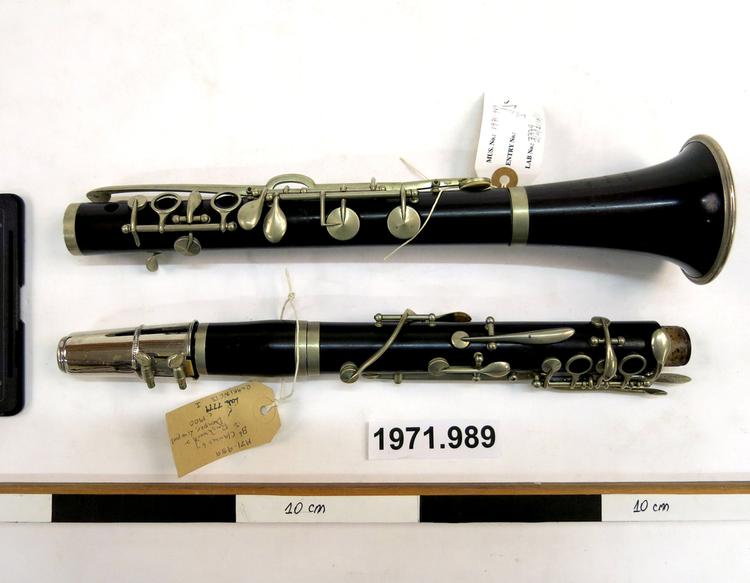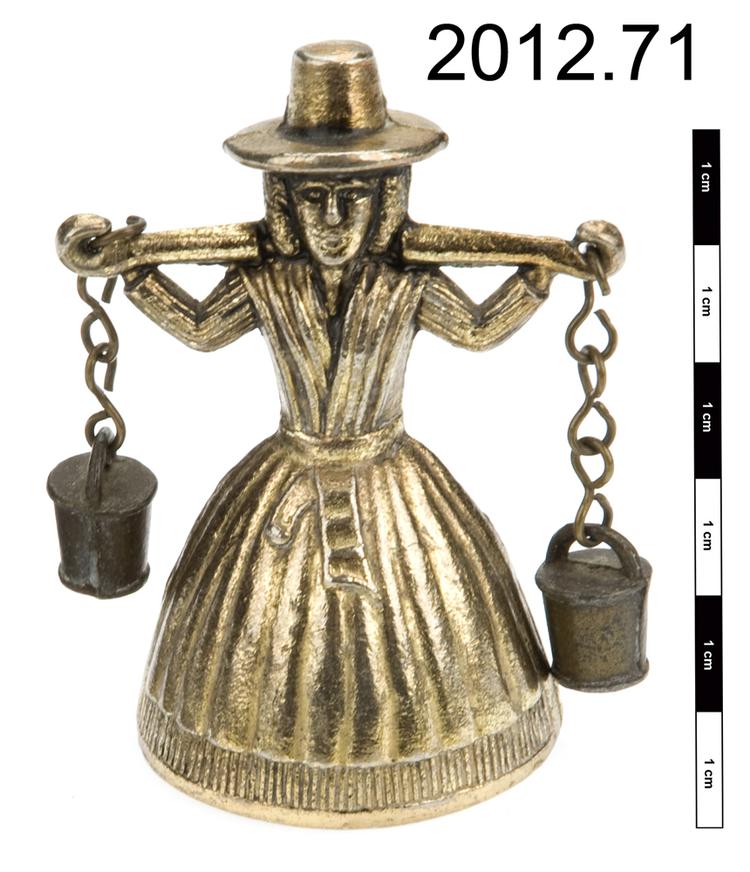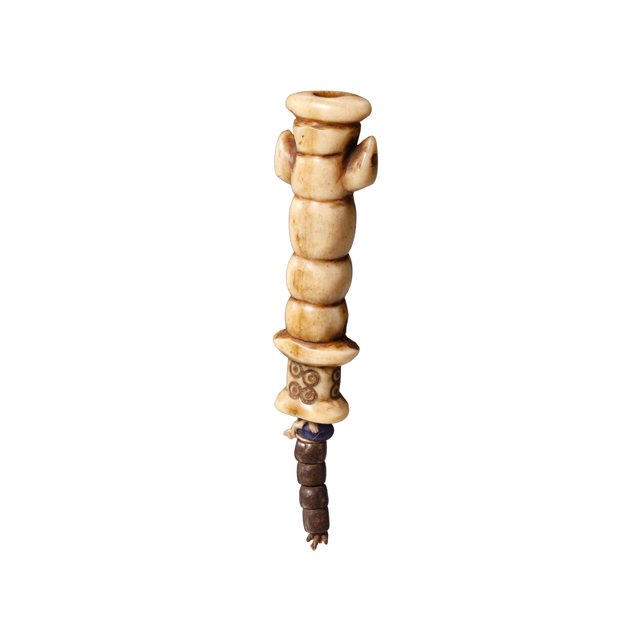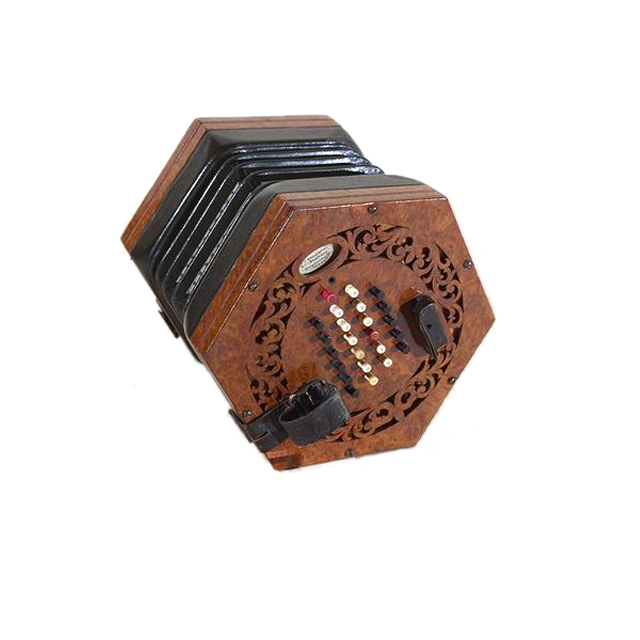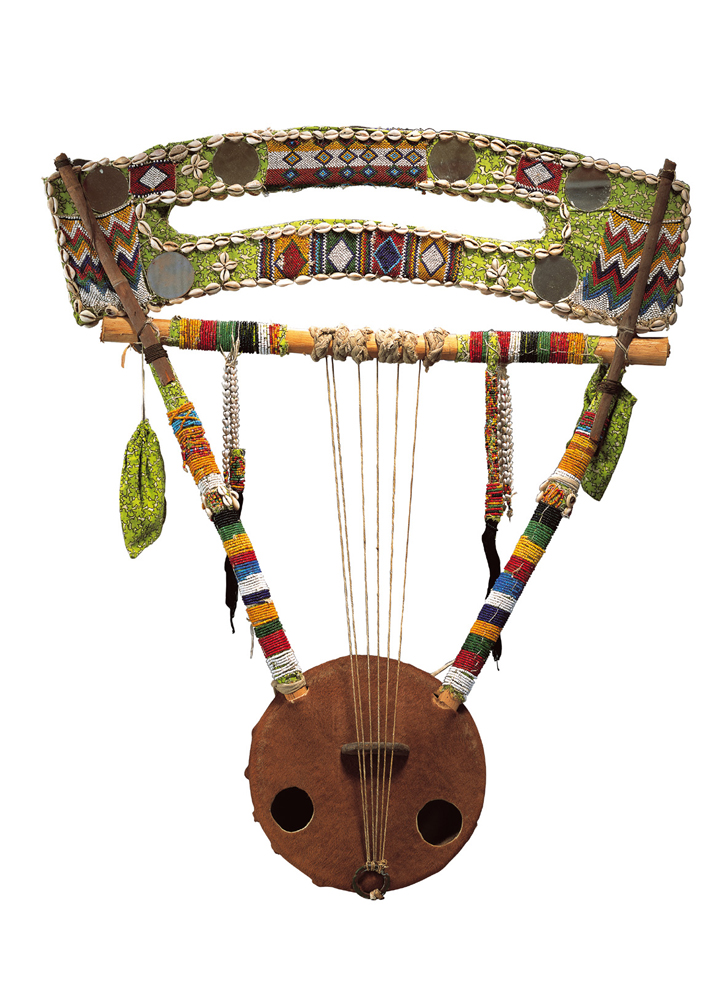
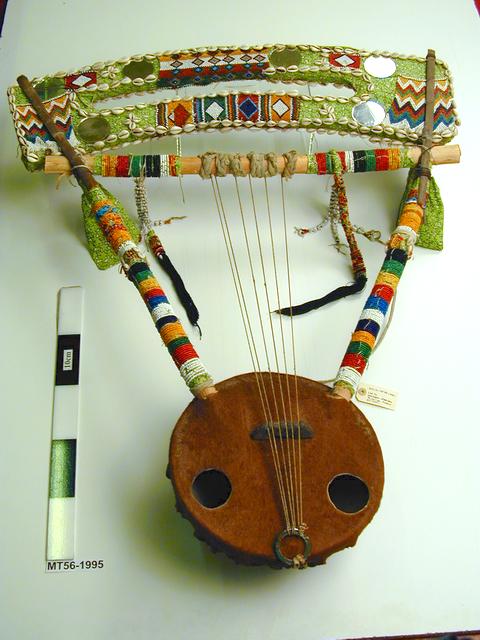
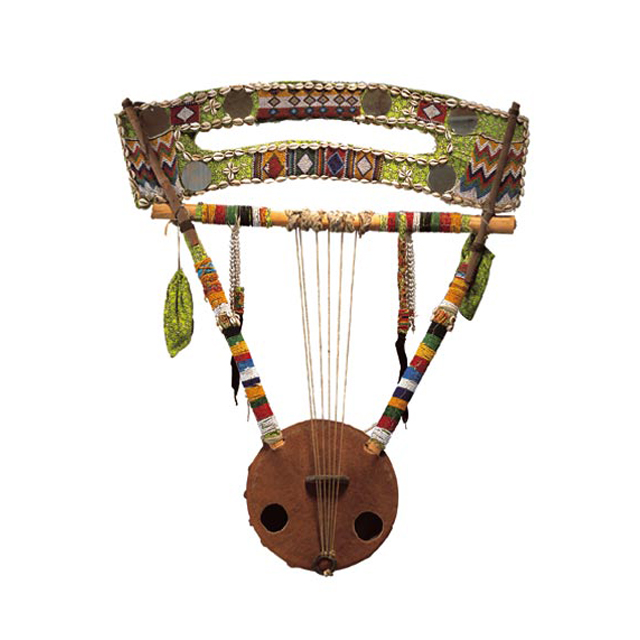
Rebaba, bowl lyre. Mammal skin sound table has two circular sound holes and is tensioned by leather straps around the body. Six strings held by a metal ring, which serves as a tailpiece. Wooden bridge, yoke and supporting arms. Yoke is elaborately decorated with beadwork, shells and mirrors. A body strap is connected between the two arms.
The rebaba is used in zar healing ceremonies in Eritrea for patients who are possessed by spirits. The mirrors on the crossbar and the amulets that hang from the instrument are thought to counteract evil. This instrument was collected around 1968 by Jean Jenkins, who was the first musical instrument curator of the Horniman Museum. Jenkins travelled widely in the 1960s and 70s and studied musical cultures in Southern Europe, Africa and Asia. Many of the instruments that she collected are now on display in museums around the UK.




